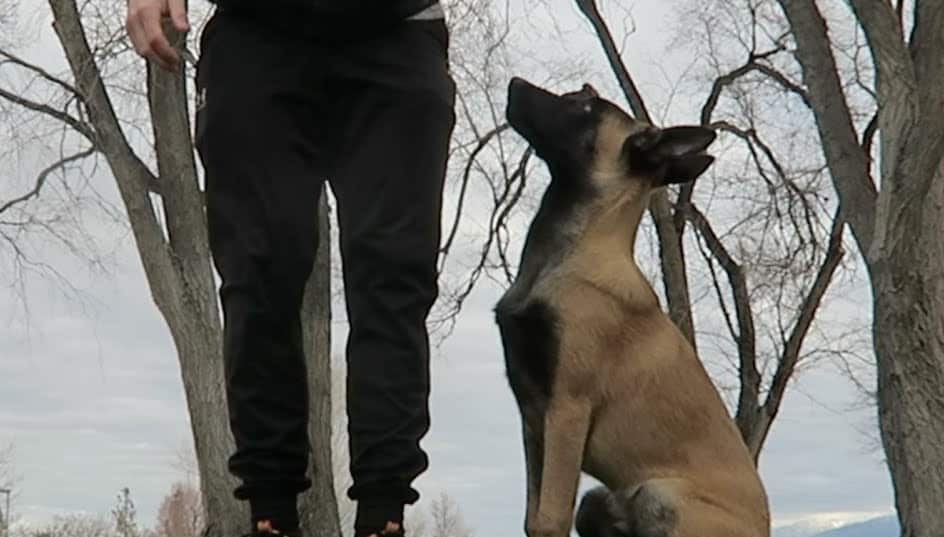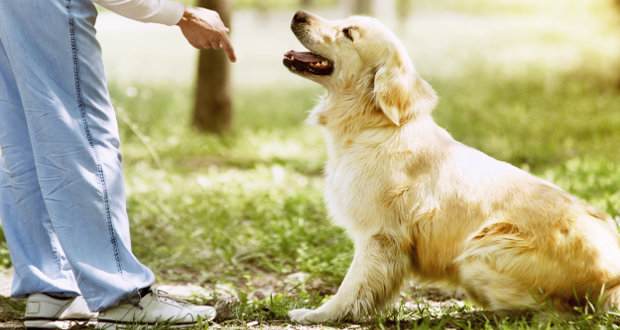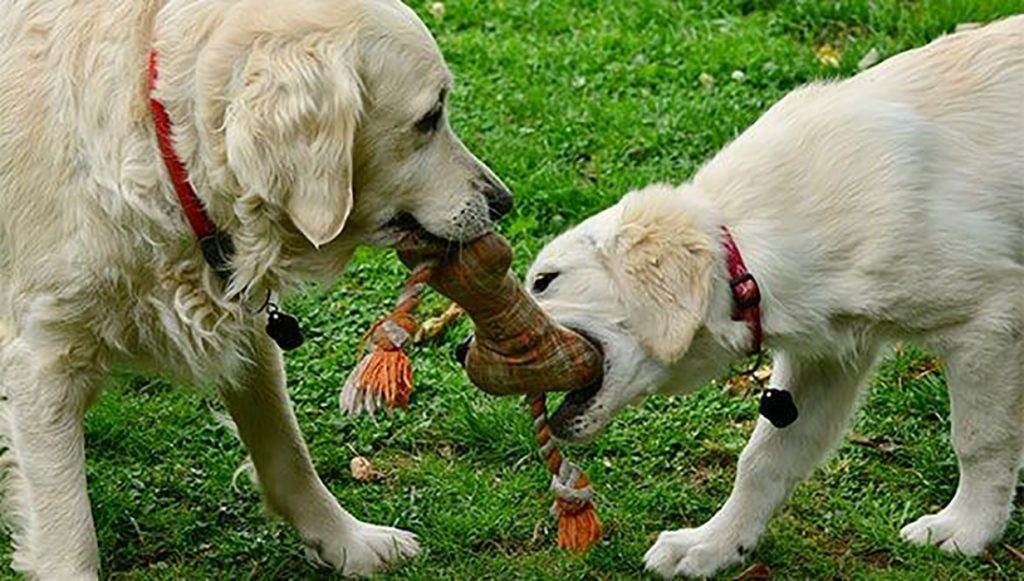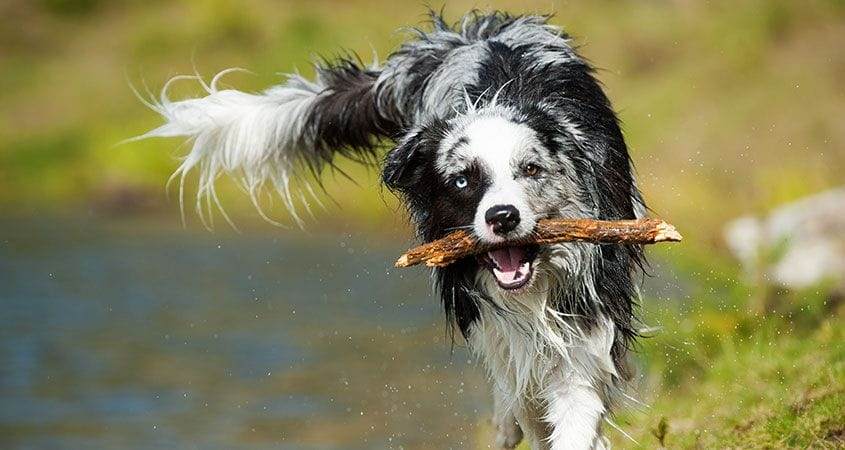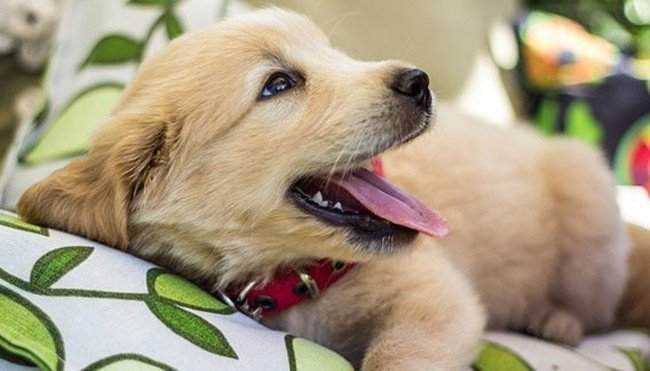One of the most popular dog breeds, Labrador Retrievers are very eager to please creatures. Therefore, the more you will engage yourself for their training, the happier they will be. And the merrier they will be, the more quickly you will be able to train them. However, before starting the exciting journey of coaching your Labrador, you must know your dog’s purpose and characteristic features.
Development and Purpose of Labrador Retriever
Having originated in Newfoundland, Canada, Labrador Retrievers were initially employed to search and rescue ducks and fishes from the North Atlantic’s icy waters. These fishermen’s best friends were discovered by the sporting nobles of England. Their beautiful water-repellent coat and even-temperament enchanted the lords and earls of England. And thus, started their journey from Canada to England. Throughout the second half of the 19th century, the English breeders tried to improve and standardize them as per their needs. Today, they are employed for a variety of purposes:
- Hunting
- Search and Rescue
- Guiding people with disabilities.
- Dryland Mushing
- Therapy Dogs
Bodily Features of Labrador Retriever
With a broad head and kind eyes, Labrador Retrievers appear to be one of the friendliest dog breeds. Their muscular and well-balanced conformation reflects their agility and strength. Based on their sex, their height ranges from 21.5 to 24.5 inches, and their weight usually varies between 55 and 80 pounds. The narrow “otter-like” tail is the hallmark of this breed, And any of the features mentioned above are not exhibited by your dog, then it is not a Labrador Retriever.
Personality Traits of Labrador Retriever
Noted for their even temperament, Labrador Retrievers tend to be quite good housemates. They are obedient, loyal, and affectionate. With their sweet-face and kind eyes, they can win the heart of your whole family. Their incredible socialization skills can help them to bond with your neighbors, both humans, and dogs. However, the same qualities can turn out to be their limitations if you are looking for watchdogs.
Being sporting dogs, Labrador Retrievers require a lot of outdoor activities and exercise. Activities like swimming and fetching games are of particular interest to them.
Potential Health Issues that can Affect your Labrador Retriever
Before starting their training, you must know what potential health issues may affect your Labrador. It will help you to plan their training requirements and routines accordingly. Some of the significant health problems that your Labrador Retriever may suffer from include:
- Elbow and Hip dysplasia
- Heart problems
- Hereditary Myopathy
- Eye Problems, especially Progressive Retinal Atrophy (PRA)
- Exercise-Induced Collapse
- Bloat
- Obesity
25 Essential Tips for Training Your Labrador Retriever
Based on their physical features, personality, and probable health problems, following 25 tips are prescribed for their training:
1) Make some time for your pup and plan its future
Before you decide to bring your Lab puppy home, it is essential to ensure that you and your family have a considerable amount of time to look after the new member of your family. Labradors are working dogs. Therefore, your pup will prove to be quite a handful when you bring it home for the first time. Besides that, Labradors require a lot of space to roam around and cast off their excess energy. So, do not forget to prepare your home as well.
Once you have brought your new furry baby home, try to spend some time bonding with it. Just like we do with our newborn babies, set out a future plan for your pup. It should be a clearly outlined plan so that you know what you want from your Labrador pup. Do not forget that your new friend is a sporting dog. Therefore, to utilize your Lab’s full potential, set out your expectations and objectives clearly. It will help you to deal with your dog throughout the training period.
2) Start training your pup from the first day itself
Labradors tend to grow very fast. But do not be duped by their size. They may look like a full-grown, mature dog, but they are an overgrown puppy in reality. Consequently, you need to start training your dog from day one itself.
The fact that your Lab is an overgrown puppy also implies that in this age, whatever actions and reactions it exhibits are bound to turn into a habit. For example, Suppose your Lab starts jumping when you first bring it home. Obviously, you will ignore it considering your dog’s size and age. However, this is precisely where you will go wrong. If you neglect your dog’s jumping tendencies when they are still young, it will become a habit. Consequently, you will find it far more challenging to make them leave this habit when they are almost 80 pounds than training them not to do it when they are still small.
3) Focus on your pup’s body language
Becoming a dog’s parent is no less challenging than becoming a newborn baby’s parent. In fact, the former can be far more challenging if you have no experience with dogs. It is a well-known fact that dogs cannot talk like us. They have their own language to communicate their feelings. And that language is body language, which you must learn to understand the requirements of your pup. Whether they are happy or sad, comfortable or uncomfortable, healthy or sick, and every other expression can be inferred from their body language.
However, to understand this language, you need to dedicate a considerable amount of time to them. Otherwise, you will not be able to train your Lab at all.
4) Teach your Lab the name you have given it
Naming your pup can be one of the most exciting parts of your dog parenting journey. However, before you plan to name your Lab, you must know some facts related to dogs in general. It is because the response of your Lab will be determined by the name you give it.
- Dogs find it tough to learn lengthy words. Therefore, you must choose a short and sweet name.
- Dogs are more attentive to the vowel sounding words. Hence, choose a name that concludes with a vowel sound.
- Dogs are more aware of non-palatized (hard) consonants. So, name your dog accordingly.
Once you are done with the job of naming your Lab, call it by its name frequently. It will enable your pup to learn its name very quickly. And watch out for your tone when you call your dog. Make sure it is pleasant. Otherwise, your puppy won’t come to you at all.
5) Develop your Lab’s socialization skills
Labradors are, by nature, social and friendly. Consequently, you won’t find it much tricky when you delve into their socialization training task. Expose your Lab to diverse situations, people, and places. Allow it to get familiar and play with other dogs. It will serve two purposes.
First, your pup will get to do an ample amount of exercise. And second, your Lab will learn the art of socializing with other dogs. Besides that, your Labrador will become more comfortable to deal with various people and situations. Consequently, mental disorders like anxiety will not be able to affect your dog under any condition.
6) Become a trustful friend of your Labrador
To train your Labrador, you first need to gain your dog’s trust. And one of the significant methods to do it is to give your Labrador ample amount of treats. Labradors are obsessed with food. Therefore, it is quite easy to take them under your wing when treating them with some food.
However, do not make fake promises. When you say that you will give them a treat, fulfill that promise. Otherwise, your dog will not trust you and do what you say during the training sessions. Always remember that a distrustful Labrador is a disobedient Labrador. So, make your promises accordingly.
7) Start potty training immediately
Labradors can turn out to be quite good house-dogs if they are taught the right thing at the right time. Potty training is one of those things. Try to identify the clues when your pooch wants to wee and, therefore, take it to the potty spot. To make sure that your pup does not develop the bad habit of weeing whenever it wants or can, keep it in small confinements.
Teach it the process of waiting a bit longer when its bladder begins to fill. Keep it in your arms or a crate for some time as it will not want to pee in either of the said places. Do not wait for longer than needed and go to the potty spot each time your pup wants to pee.
8) Language Training
A dog’s brain is one-tenth of the size of a human brain. Consequently, your Labrador can learn up to 200 words. Since dogs do not have any particular language to learn, you can choose any term or sound to indicate a behavior. Start with the basic commands like sit, come, down, stay, and leave it. Be consistent with the command words and ask all of your family members to learn them.
Once you are done with the basics, start using different tricks to prevent your Labrador from developing any bad habit. Don’t use abusive words if your dog doesn’t listen to your command. It can have counterproductive consequences.
9) Supervise your pup continually till they become 20 weeks old
As puppies, Labradors need constant supervision. Whether it is about dealing with new humans, remaining confined to crates, going through a baby gate, or strolling near a fenced area, Labrador pups require constant monitoring. You can’t predict what new things they will try and therefore develop a bad habit. Some of those habits include jumping and guarding things.
Consequently, you must dedicate a considerable amount of time to monitor the activities of your Labrador. Train him on how to not jump and not hide and guard things. And do not forget that you have very little time. The best period to train your Lab is between 8 weeks to 20 weeks. In fact, 20 weeks is the watermark. Therefore, try to make the most of this time and utilize the full potential of your pup.
10) Deal with your Lab’s biting and chewing habits
Labradors tend to develop a terrible habit of biting and chewing when they grow up. Unfortunately, you cannot do anything to deal with this issue when they are a puppy. In fact, it is quite natural for them to nip at this stage as they are teething.
Otherwise, how will they relieve the tremendous pain of developing new teeth? But when they grow up enough, you need to start monitoring this habit. Try a process called “Biting inhibition” to deal with this issue. Under this process, you need to teach your dog how to not use their teeth unless you ask them. The method comprises of four phases:
- In the first stage, you need to teach your pup how to bite gently. Sit with your dog when it looks calm. Start this gentle game of nipping and squeal when it nips you hard. If it stops, pat its back gently as a sign of praise. If it does not stops biting, quit the game immediately.
- In the second stage, you need to teach your Lab how to use a ‘soft mouth.’ Set a limit to your dog’s nipping intensity. Try to reduce the degree of that intensity slowly to a stage in which it stops putting pressure.
- In the third stage, teach your dog to follow your commands while biting. The objective of this stage is to train your dog the meaning of the word ‘stop.’
- In the last stage, you need to keep this biting game entirely under control. This stage aims to teach your Lab that it must not bite a human being unless commanded.
11) Focus on Leash training from puppy stage itself
Labradors are very inquisitive creatures. Consequently, if you don’t leash them while taking them for a walk or run, there are high chances that they will wander off. Therefore, you need to begin their leash training from the puppy stage itself. Otherwise, you will have to suffer a lot when they have grown up into an adolescent of 80 pounds. Start training with a loose leash and by no means allow your Lab to pull it. Show him who’s the leader by changing direction whenever your Labrador tries to pull on to the leash.
12) Do not tighten the leash
Before starting your leash-training, make sure that the strap around your dog’s neck remains loose. A tight strap can make your dog anxious as it is an indication of the handler’s anxieties. If your pup senses any tension emanating from you, you will not be able to control it.
13) Watch out for your Lab’s eating habits
Monitor your Lab’s nutritional needs. Make sure that it is neither malnourished nor over-nourished. Try to provide your dog with the best quality dog food to make it have a balanced diet. It will help your Lab to stay physically and mentally fit. Also, ensure that your Labrador doesn’t overeat as they are one of the most vulnerable dog breeds to develop conditions like obesity.
14) Punishments don’t work
Don’t intimidate or punish your dog if they do not meet your expectations. There are two reasons for it. First, they do not understand the objective of punishments. And second, it can make your dog aggressive, anxious, and a slow learner. According to some studies, penalties can make your dog less wilful to try new things.
The fear of getting punished can lead them to become afraid of making the wrong choice. Consequently, you won’t be able to train your Lab at all. Besides that, an anxious dog can be a very high maintenance dog, and it can develop a nasty habit of biting.
15) Monitor their Barking habits
Labradors are especially notable for their quiet and even temperament. However, if you do not teach your Lab the meaning of the command ‘quiet,’ it can develop frequent barking habits. For example, Suppose your Labrador wants to get out of its crate and starts barking to gain your attention. You will obviously be compelled to listen to its demand so that it doesn’t hurt itself. However, such a response can give your dog an indication that it needs to bark to get its job done. Consequently, it can develop a terrible habit of barking.
To avoid such a scenario, you shouldn’t listen to its demand unless it stops barking. Teach it how to keep quiet and then only listen to it.
16) Deal with your dog’s digging habits
As a Labrador Retriever owner, you must keep in mind that your pup can develop a digging habit. If your house has a beautiful garden or a backyard, you must try to deal with your dog’s digging habit. Otherwise, there is a high chance that your pup may destroy your beautiful garden due to its digging practices. Fortunately, you don’t have to do much to deal with this behavioral issue of your dog.
Just find out the cause of such actions. Generally, Labradors start digging when anxious, frightened, bored, hiding something, or preparing for their young ones. Try to resolve these issues, and your Lab will stop digging.
17) Positive Reinforcement is a must
As mentioned earlier, punishments don’t work as far as dogs are concerned. The only way through which you can train your dog is positive Reinforcement. Since Labradors love food, you can reward them with small treats when they meet your expectations. Make sure that the training sessions of your dog are always positive. Avoid using negative words like “No” as much as possible. Remember that you have to make your pup understand what you expect from it rather than what you do not expect.
Apart from material treats like food, reward your Lab with verbal treats and praises. In fact, you must get your dog used to verbal treats and praises. Too much of food treats can lead your dog to suffer from obesity.
18) Cater to their exercise needs
Being retrievers, Labradors are bound to be energetic and enthusiastic. Consequently, you must be mentally prepared to cast off your dog’s excess energy. Otherwise, it can indulge in undesirable behaviors. Take your dog outside for walks and sprints at least two times a day. Engage your Lab in exercises that are good for its overall health. You can also consult a vet for suggestions.
19) Make the training sessions short and exciting
As mentioned earlier, try to make your dog’s training sessions playful and positive. Instead of engaging your dog in long 45 minutes of training sessions once a day, try three sessions of 15 minutes. It will serve three purposes:
- Your dog will be enthusiastic about its training sessions and won’t get bored.
- The sessions will engage your dog’s intelligence and energy.
- Your dog won’t get distracted or quit before it has met your expectations.
20) Learn to be patient
Patience is the most essential tool of this whole dog parenting process. Dogs have a natural instinct to sense our mood and body language. If you become impatient, your Lab will also give up. So, try to take the whole training process a bit slow. Take small baby steps every day. Adjust your expectation levels according to the age of your pup. The more they become mature, the higher you set your expectation limit. And don’t get too pressing. Make the whole process a fun-filled experience for both you and your Lab.
21) Engage your pup in some retrieving games
If you wish to utilize your Labrador’s full potential, engage them in some fetching games. Take your dog for hunting trips and field trials. Make them participate in some competitive events like tracking, obedience, dock diving, and agility sports.
22) Consistency is the key
Be clear and consistent with your expectations. It will make the training process more fun-filled and convenient for both you and your Labrador. Be regular with your training sessions, and keep repeating everything you have taught your dog. Otherwise, your Lab will forget everything.
23) Take your pup for routine check-ups
Provide your Labrador with all the required vaccinations and take it for regular check-ups to a vet. Get its heart, eyes, ears, joints, muscles, and weight checked to avoid any health problems beforehand.
24) Take the help of a professional trainer
Learn to take advice when needed, especially if you are a first-time dog owner. Approach a professional trainer for help. Make sure that both you and your Lab participate in the training sessions. Not only your dog, even you need to learn the basics of dog training. Otherwise, you won’t be able to handle an intelligent and agile breed like Labrador Retriever.
25) Do not push your dog
If you want your pup to grow into a happy and healthy dog, do not strain it beyond its capabilities. Set your expectations accordingly, and do not quit before your Lab has met your expectations. Always remember, “Rome was not built in a day.”
Conclusion
The trainability of your Labrador Retriever will primarily depend on your breeder. Some of the breeders mainly focus on the Labradors’ looks and, therefore, ignore intelligence. While others focus on the temperament and aptitude of the Labradors they produce. If you wish to have a convenient to train Labrador Retriever, you must approach a breeder of the latter type.
Apart from the breeder, the trainability of your Lab will also depend on your patience and experience. The more you have the time and expertise to train your dog, the less painful it will be to train your Labrador. If one has to rate the overall trainability of a standard Labrador Retriever out of 10, it would be 10. The reason behind this is that their intelligence and eagerness to please nature makes them a very convenient breed to train.
References
- https://modern685.rssing.com/chan-13710396/all_p2.html
- https://books.google.com/books?hl=en&lr=&id=463UDwAAQBAJ&oi=fnd&pg=PA3&dq=Labrador+Training+Tips&ots=mCR_akSJ8e&sig=HpbyzXq8ew6ZmO0j9VNfmG2iko4
Table of Contents

